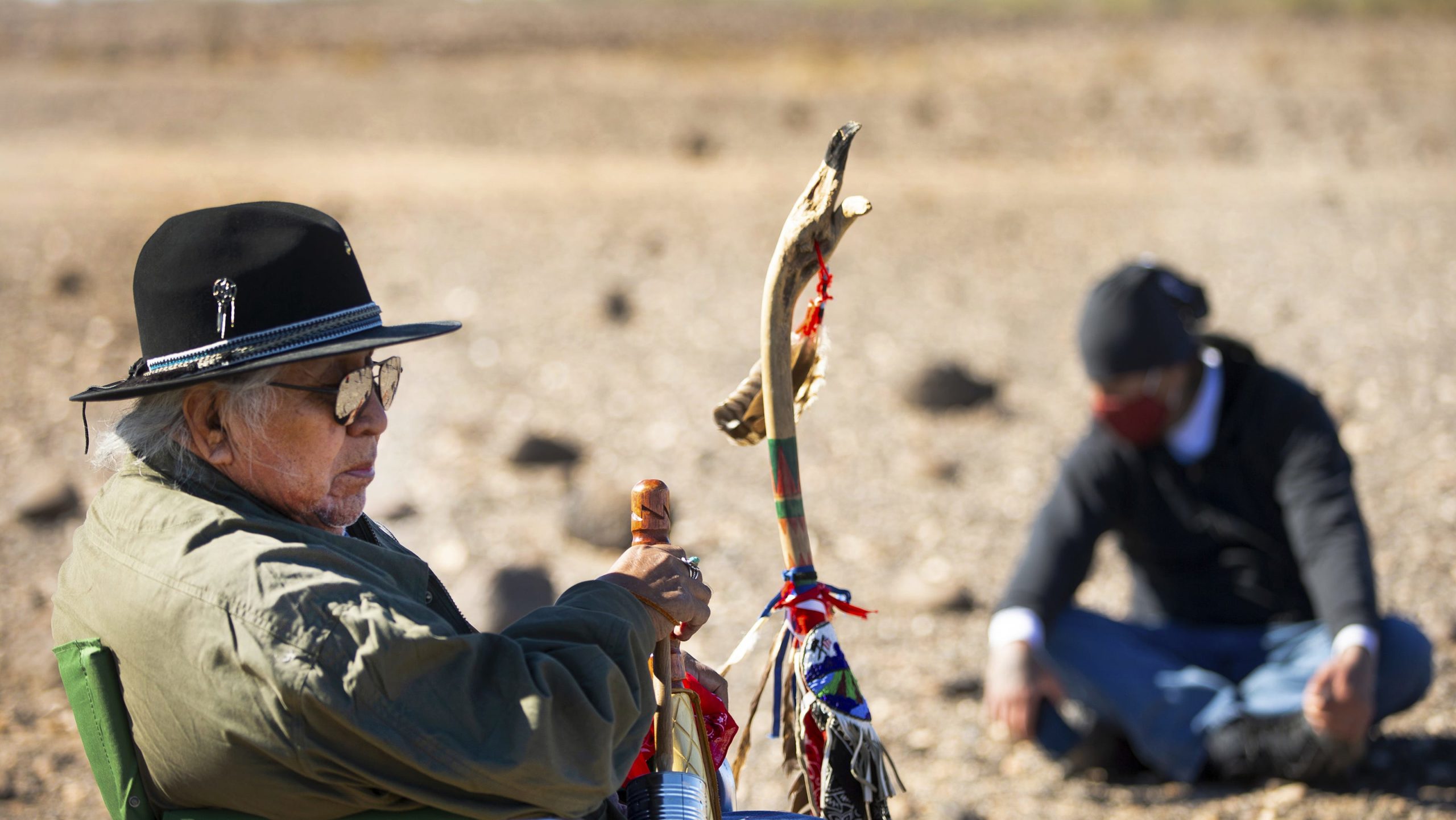YUMA — Preston Arrow-weed raises his rattle, crafted from an empty tin can, pebbles and a wooden handle, as he leads another in a series of songs that describe the lands, waters and ecology of the lower Colorado River Valley.
The project still faces environmental reviews and will likely face new scrutiny from the Biden administration, which is looking closely at what happens on public lands.
Cast a casual eye on the lands where the Quechan live — bordered on the east by the river and the Chocolate Mountains, to the south by the Imperial Sand Dunes and Yuma — and you would only see the flat expanse, the creosote bushes, some scraggly trees lining an ancient wash.
Trails made by footprints over the millennia lead to washes, prayer and sleeping circles, to geoglyphs inscribed on the land up and down the lower Colorado River Valley.
The once volcanically active lands in southeastern California harbor gold, zinc, copper and other metals in varying quantities.
Then in 1987, Glamis Gold Ltd., a Canadian mining firm, started acquiring mining claims on federal land along Indian Pass Road, about 35 miles northwest of Yuma.
The land directly west of old Glamis Gold claims, now owned by another mining company, along with other lands in the area, have been designated the Picacho Area of Critical Environmental Concern by the Bureau of Land Management.
citizens the right to stake claims on federal land virtually for free, although foreign companies can work around the law by opening U.S.
In 2003, California passed legislation to protect lands affected by hard rock mining.
Glamis gave up and eventually sold off its claims to another mining company, which in turn sold to KORE Mining, another Canadian company.
Christobal Illingworth, 33, sported a spike-adorned jacket and a GoPro camera during a visit to the Running Man area of Indian Pass.
The soil beneath is excavated, crushed and placed into specially-lined pits, where the gold is leached from the ore, usually using a cyanide solution.
“The nature of the ore out here is such that the company would have to process hundreds of tons of ore to yield an ounce of gold,” said Golding.
Golding added that the plan has a huge snag: “The mining company hasn’t really come up with a solution for centuries of compaction,” he said.
“We’re committed to obeying all the laws in California and the United States, including a full National Environmental Policy Act process,” Leduc said.
Leduc also noted the economic benefits the mine would bring, especially since the nearby Mesquite Mine is reaching the end of its run.
More workers would be needed to complete the mitigation work after the mine plays out, Leduc said.
Leduc says he’s got a plan for all the extra aggregated material left over from the mining operation.
“I’m in the mining business.
“When the snake was killed and his blood came out, it was gold.” The snake’s spittle was silver, and his urine made the oceans salty.
